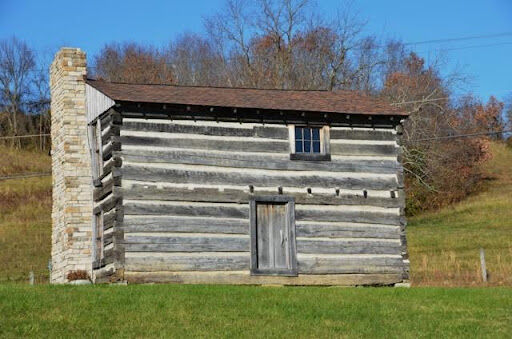
A log home is incredible in the fact that the wood is a natural beauty that is not uniform. Wood not only breathes but will expand and contract with extremes in temperatures.
When this happens, gaps can appear between the logs. In order to keep the home insulated, these gaps are filled with chinking between the logs to seal the spaces, eliminating air filtration and heat loss. This protects the interior from the outside elements and the possibility of pests.
Log Cabin Chinking
All logs are unique, varying slightly whether they’re the same species from the same area. There will be subtle differences despite thorough drying time. Once you stack these, the gaps, holes, and tiny cracks appear because the logs don’t align perfectly.
Not only do they not align, but they will curve, twist, and bow with temperature changes when under pressure, with sun exposure and humidity. These constant shifts create gaps, allowing air and pests into the cabin. With log cabin chinking, owners can expect a warm and protected home.
The non-toxic seal works between the logs to fill the gaps, making them airtight. It comes in an array of colors to either stand out against the cabin’s color as an accent or blend. When original log homes were built, contractors used mud, grass, manure or straw, anything on hand to stuff into the gaps. Nowadays, there are better options.
Mortar chinking
With older log homes, a common type of chinking is mortar. The cement-based mortar is readily applied to the long strips along the logs to fill the gaps.
It appears authentic, with the colors either blending to match the logs or contrasting for an accentuation. See a historic log home repair and restoration at old house online. com/repairs-and-how-to/repairing-a-historic-log-cabin.
This style is beneficial for keeping the logs from rotting or warping as they age. With this chinking process, a small amount of insulation can be sealed in for greater energy efficiency to save on utility costs. It allows owners greater comfort in the extreme temperatures of the winter and summer.
According to tradition, various materials were used to produce chinking depending on available products in the area. It was often a blend of lime, clay, and sand with variations whether these were scant or not in that particular area. This mixture would be plastered into the log gaps either by hand or using a trowel.
The idea was to leave a rough texture to keep pests and moisture from coming into the space. The hope was that this would leave a durable finish that could withstand the harsh elements, but it wasn’t unheard of for mortar to become damaged, cracked or crumble with debris, pests, and aid getting inside.
The new non-toxic systems have come a long way with drastic improvements, better performance, greater durability, and withstanding log shifting. The chinking is much more rot resistant as it won’t absorb moisture as readily. Read about DIY log cabin chinking.
Synthetic Chinking

Synthetic chinking is a new product compared to mortar but one that is favored for its flexibility. Its appearance is similar to that of mortar, but it offers simple navigation around the home’s logs. Chinking can protect the cabin from weather conditions, moisture, and pests.
Without this step, the home won’t receive what it needs for the logs to remain healthy, including sun and air. The logs will kink, twist, and cup, creating gaps between the wood that allow not only inefficiency but also infestation of mold and potential rot.
It’s recommended to have a professional contractor apply chinking; one experienced with log cabins. These experts will ensure the logs are clear of dirt, oils, or wax. The material for your climate will ensure its effectiveness and can withstand the natural elements.
The most effective chinking application will ensure the cabin has climate control, maintaining a cool space in the extreme temperatures of the summer and a warm space in the cold of winter. With the right material and the proper installation, your heating and cooling will be much more efficient, allowing considerable savings in utility costs throughout the year.
Final Thought
A log home is a beautiful property that owners want to preserve for an extended lifespan. One way to maintain the integrity and health of the logs is through chinking, a priority for filling gaps, cracks, and holes that are a natural part of stacking the imperfect wood. Learn about log cabin repair at https://www.structuremag.org/?p=10505.
Chinking fills these spaces, providing a seal to protect from air, weather elements, moisture, and pests from reaching the home’s interior. It increases energy efficiency, reducing heating and cooling demands and allowing savings on utility costs.
Each chinking method offers its benefits, but the suggestion is that the synthetic method is the most effective as a safe, non-toxic option. It’s recommended to have a professional contractor perform chinking for the most effective outcome.




(0) comments
We welcome your comments
Log In
Post a comment as Guest
Keep it Clean. Please avoid obscene, vulgar, lewd, racist or sexually-oriented language.
PLEASE TURN OFF YOUR CAPS LOCK.
Don't Threaten. Threats of harming another person will not be tolerated.
Be Truthful. Don't knowingly lie about anyone or anything.
Be Nice. No racism, sexism or any sort of -ism that is degrading to another person.
Be Proactive. Use the 'Report' link on each comment to let us know of abusive posts.
Share with Us. We'd love to hear eyewitness accounts, the history behind an article.